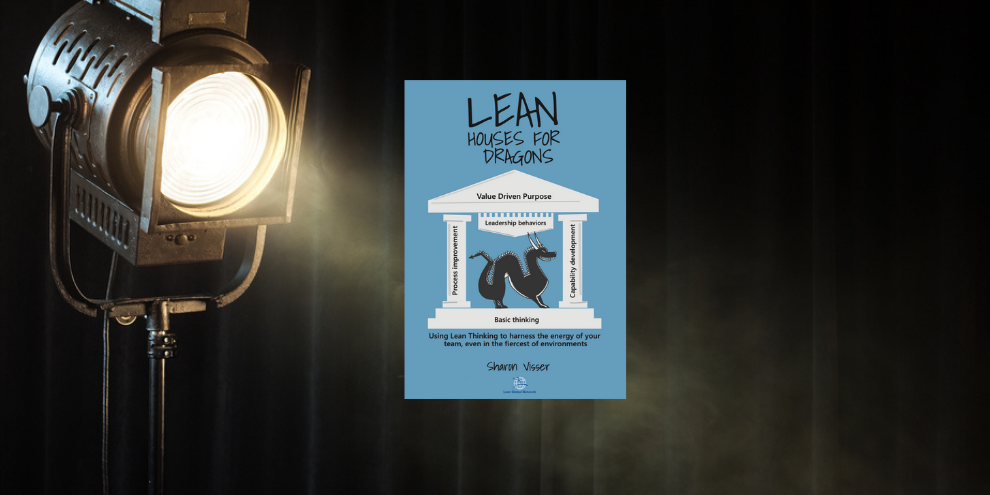
Different behaviors for different stages of a lean journey
RESEARCH – Why do we struggle to identify the managerial behaviors that underpin different stages of a lean transformation? The author’s research looks into how we can be more situational in our leadership approach.
Words: Arnaldo Camuffo, President, Istituto Lean Management and Professor of Lean Management at Bocconi University - Milan, Italy
Three years ago, I visited a mid-size Italian company eight years into its lean journey. The CEO took me for a gemba walk. He provided me with the evidence of the ongoing lean program (a wealth of lean tools) and boasted about the number of kaizen weeks conducted annually as well as the money invested in consulting.
After our walk, the HR director joined us and made a presentation which included detailed statistics about training, the results of the annual employee engagement survey, and the monetary incentives associated to the company’s suggestions system. The last three slides, the most important in the presentation according to the HR director, related to the company’s leadership model. This was a “lean leadership” model, used to operate a state-of-the-art performance management system upon which decisions on hiring, promotions and development programs were based.
The lean leadership model included six leadership behaviors. Interestingly, three of these behaviors were three “classics” of lean practice: go see, ask why, and show respect. This looked good on paper, but then I asked the HR director a somehow naïve question: “How did you identify these behaviors and how did you decide they were the right ones?”
Taken aback by my question, he answered: “This islean leadership.” He went on to explain that the behaviors included in their model are commonly quoted by consultants and books as thelean leadership behaviors. Not to mention that “they were the Toyota Way leadership behaviors”. I was surprised by the answer and, right after the visit, I started to investigate whether this copy-and-paste approach was an isolated case or a widespread practice.
I soon found out that, all too often, organizations adopting lean thinking often implement lean leadership models borrowing existing off-the-shelf models from elsewhere (Toyota? Danaher? Virginia Mason Medical Center?). Sometimes, they cherry-pick behaviors from different models without really asking why they are doing it. I also realized that, in some cases, lean companies take another, equally dangerous shortcut – assuming (wrongly) that lean leadership is equivalent to other popular leadership models and their corresponding traits, such as transformational leadership, servant leadership, results-based leadership or even emotional intelligence.
I then reviewed the relevant literature and found that lean leadership studies typically offer insights into lean management behaviors that are case-based (thus hard to generalize) and rely on anecdotal evidence. They offer neither quantitative empirical data nor replicable research protocols or appropriate metrics. The former aspect is partly due to the fact that many of these studies are conducted by and aimed for practitioners, as well as to the fact that it is difficult to integrate lean operations literature into leadership and management literature.
All of this helps to explain why lean management behaviors are often over-sold, but under-engineered in lean transformations, so that lean systems tend to be prevalently focused on tools.
In general, I believe that we are witnessing a sort of “lean leadership hypocrisy” (in the word’s original meaning, coming from ancient Greek, of being unable to make judgements) both in research and in practice. Scholars and practitioners seem reluctant or unable to rigorously identify what set of leadership behaviors better support a lean transformation and under which circumstances.
In a bid to contribute to the addressing of this gap, I have set up a large-scale field study aimed at: a) identifying and empirically validating a repertoire of management behaviors associated with the adoption of lean systems (using Jim Womack’s repertoire proposed in LEI’s book Gemba Walks); and b) showing that different subsets of such behaviors differentiate lean systems at different stages of maturity and in different settings. Using quantitative and qualitative methods, the study analyzes 26 cases of lean transformations.
I find that: 1)there is a general repertoire of management behaviors that support lean implementations and complement the adoption of lean practices; 2) different subsets of these behaviors are associated with different stages of lean maturity, as well as company characteristics. For example, more successful transformations are characterized by leaders who make decisions based on a thorough understanding of facts, directly at the point of value creation, tapping into the local knowledge of the employees involved in the operations. They also interpret their role as teachers/instructors and coaches, taking direct responsibility for people’s capability development and co-practicing with subordinates specific learning routines. At the same time, not all behaviors have the same importance.
The practical implications of the study are straightforward:
- Adopt a situational approach to lean leadership. Every lean transformation is different and requires a purposely-defined leadership model. Use the Lean Transformation Framework and its five questions to make sure you are eliciting the appropriate leadership model and you are not falling in the “lean leadership hypocrisy” trap. For example, the size of the performance gap to fill (vis-à-vis competition), the size of the performance improvement to achieve (as required by Hoshin) or the urgency of the strategic problem to be solved through the transformation will shape the leadership behaviors to be chosen from the feasible set.
- The leadership model is likely to change over time. Don’t assume it remains the same as your lean transformation progresses. Instead, you should periodically question your leaders’ behaviors and fine-tune the model. For example, lean leaders undertaking transformations will probably have to focus on the development of standards (they conduct/oversee the creation of standards and audit their application, suggesting corrective actions if necessary, thus creating a baseline for continuous improvement) and on engagingemployees in challenging conversations about what the processes they are responsible for should look like to be aligned with the desired goals (they facilitate the self-definition of target conditions/future states that will drive the achievement of such goals on the basis of strategy deployment and customer value). Both these leadership behaviors are necessary to bring stability to the system, motivate the transformation and engage people. Vice versa, leadership behaviors like supportiveness (provide help and assistance, coaching extensively to fully and quickly support the needs of workers) and managerial development(develop managerial skills designing and overseeing learning activities built in ongoing operations, such as developmental assignments or improvement projects, and integrated with the continuous improvement initiatives) are more critical at a later stage, when it is necessary to sustain change.
- Be rigorous and fact-based in identifying your leadership model. Our study provides a “unique” approach to lean leadership modelling, which effectively and efficiently operationalizes the set of lean behaviors that are consistent with your lean transformation. It is based on gemba walks, leaders’ behavioural event interviews, their rigorous coding and statistical analyses.
Overall, thestudy provides practical guidance for the implementation of a lean system, suggesting a set of management behaviors within which firms can identify and validate specific, appropriate subsets of behaviors aligned with the company strategy, culture, size, environment, bundle of lean operation practices adopted, and maturity stage of lean adoption.
THE AUTHOR

Read more


FEATURE - The Basic Thinking dimension of the Lean Transformation Framework is often the most neglected and the least understood. The author tries to shed a light on the subject.


FEATURE – Until “check” and “act” become a natural part of daily work, we will always need formal audits to keep people focused and to sustain results. Here’s a few tips to make them work.


INTERVIEW – Grupo Anima, a Brazilian private education organization with almost 100,000 high-school students enrolled, has revolutionized its culture since introducing lean. But it all started with one project…


FEATURE – As her new book comes out, the author discusses how it is people who breathe life into an organization and how much a leader’s behavior can influence them.

